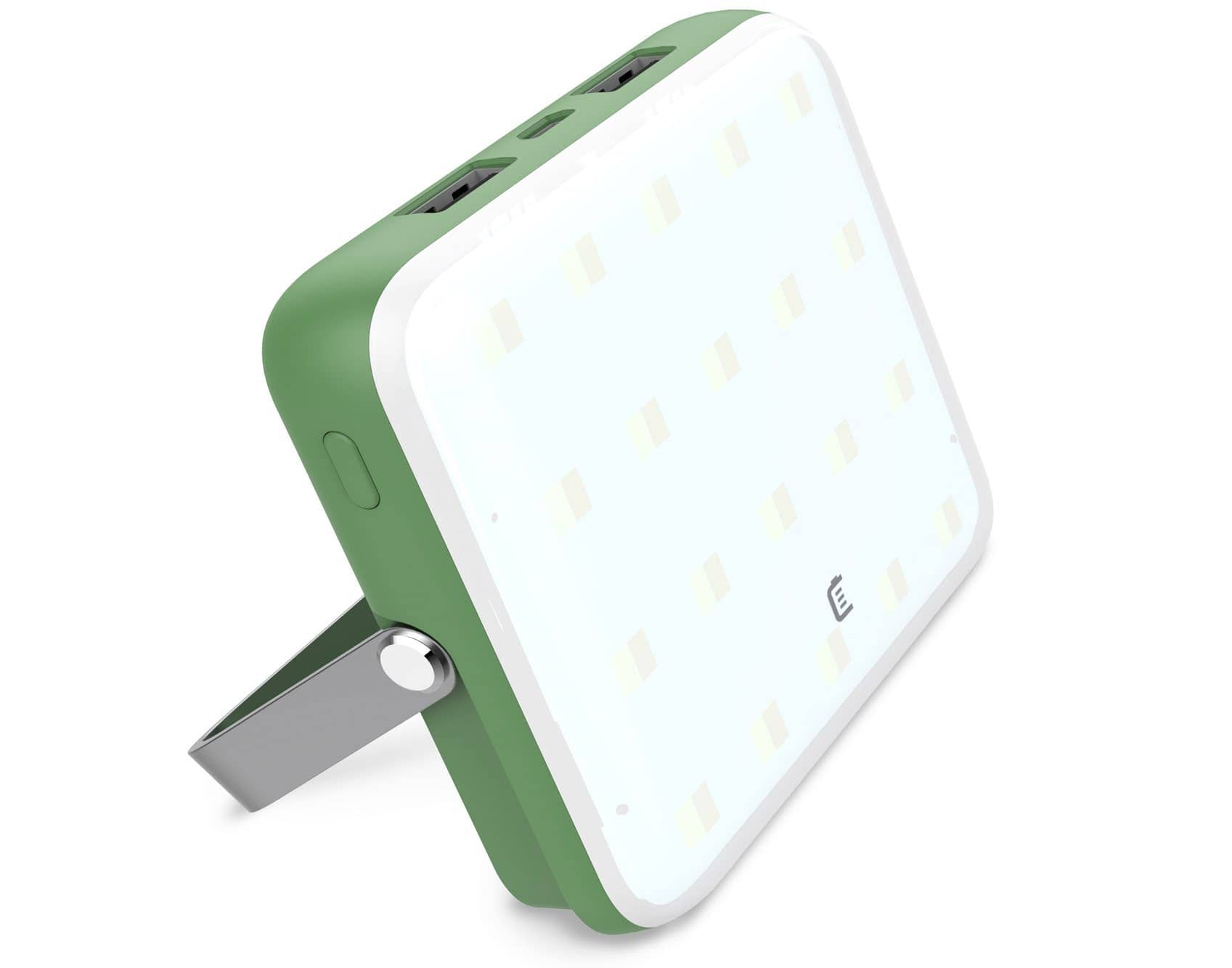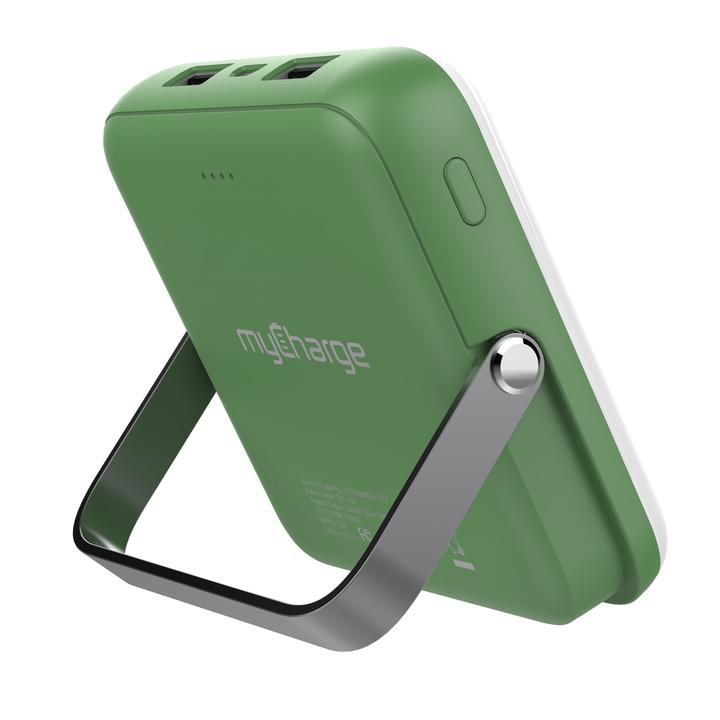Electric, Light, Organizedflameless light and power stopgaps for the homeless
Thanks to my friend Marc Juul, I’m beginning to get my head around a stopgap approach to two key needs of homeless folks here in Oakland: power and light. In a nutshell, USB power banks are to power what jerrycans are to water. We should provide homeless folks power banks and LED lights, either separately in combination units, and find local leaders with access to power who can exchange empty banks for newly charged ones. This will help people stay connected and light their shelters without the fire risks they’re running now.
I’ll start a small-scale field test with myCharge camping power banks in the next week or so. These units sport 10,000 mAh capacities, can charge two USB devices at once, have 4 × 5 arrays of LED lights built into their housings, and come with metal kickstands that can prop them up at angles or dangle them from above. They’re available on Amazon for $30 delivered at the moment, which is just a bit more than a quality water jerrycan.


The manufacturer claims perfectly suitable battery life for the lantern:
| Brightness Level 1 | 9 Hours |
|---|---|
| Brightness Level 2 | 15 Hours |
| Brightness Level 3 | 22 Hours |
| Brightness Level 4 | 41 Hours |
Battery life was a fatal shortcoming of other options, especially solar-powered lanterns. Even with a full day of bright sun, those could rarely last a long evening. When they’re needed most, during long winter nights, the days are unhelpfully shorter and dimmer. Folks fell back on candles and kerosene lamps.
I’ll be interested to see how long these particular units last charging phones, as well, and whether the time to recharge the pack from dead proves practical. One of the keys is making sure it’s faster to fill one than to drain it. Much like water.
Fortunately, experience from the water exchange program has been very reassuring, even inspiring. Originally, I’d thought a lot about making sure that other housed people could step up and run exchange programs for homeless neighbors. It’s turned out to be far easier, and more effective, to equip leaders within the homeless camps themselves to run the exchanges directly.
Once they have a friendly local source of water, it’s just a matter of providing suitable containers and making sure the water stays safe and available. That done, I’m more than happy to see others take over, especially since my recurring back injury refuses to go away, and local distribution means shorter hauls for all. The folks on-site also seem happy to be able to help others around them. As I’ve learned over and over again, it’s one thing to do a nice thing for someone making do on the street, and something altogether more powerful to put them in a position where they can be generous with others.
The road to self-sufficiency, even for just one relatively stable distributor, is the trick. The letter I cosigned to EBMUD earlier today was a big step in that direction for drinking water, both to “legalize” distributing water by car, and to hopefully get direct, legal, and safe access to fire hydrants. Some friends and I have also begun pilot programs attempting to get Pacific Gas and Electric, the local power utility, to approve “temporary power” service—essentially power boxes dropped from electrical poles—for remote camps in industrial areas.
The analogy is perfect. Hydrant meters are how construction teams access the water system for their work in undeveloped areas. Temporary power boxes are how they access the power grid. When we can’t get access to utilities where the homeless people are, we have to use those utilities where they’re connected, package the results, and drive them to the camps. Cobbled-together alternatives—generators and spliced lines for power, sand filters and open-flame boiling for water—pose incredible risks. Especially fire risks, which is why we have hundreds of homeless camp fires per year in Oakland.
The major obstacle to the battery-pack plan looks like cost, or more accurately price. Theft is a constant threat in camps and power banks are worth stealing, if not for resale than for personal use. They are far easier to carry away than jerrycans full of fifty pounds of water. And of course $30 isn’t nothing, on the giving end.
Again thanks to Marc, I’m reading up on 18650 lithium-ion batteries, the commodity type and size of rechargeable power cell used in most laptops, cordless power tools, electronic cigarettes, flashlights, and even electric vehicles. Larger USB power banks use them, too. Reputable brands like Panasonic produce batteries approaching 3,000 mAh. Chargers, protection circuits, and even solder-and-go boards for USB power banks are broadly available. It might be worth standardizing on USB charging. It might be better to charge 18650s directly.
Your thoughts and feedback are always welcome by e-mail.
